As my airbrush is out of action (I may have to buy a new one) I am back to using 'rattle cans'. I did look around for a good acrylic spray 'Dunkelgelb' - German Dark Yellow - but the only one I could find was by Flames of War in their War Paint range. Called 'Panther Yellow' it seemed to go on as well as Humbrol's excellent sprays...
Had my airbrush still been working I would have used Vallejo's excellent water-based polyurethane German Dark Yellow Primer. This has a tinge of pea-green to it, rather than the sand-yellow of the Flames of War paint...
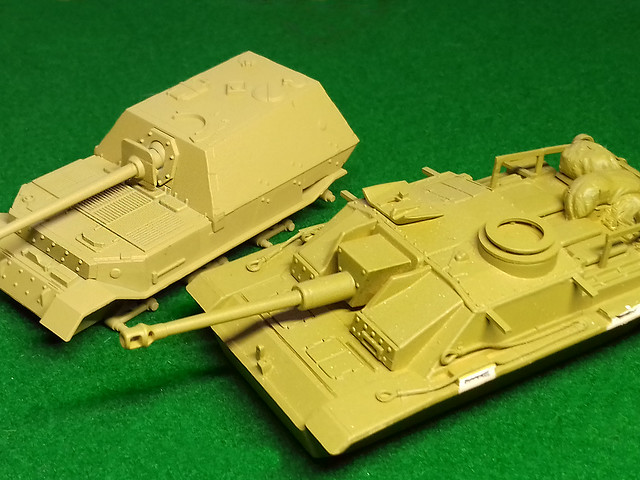 |
| Left: FoW's 'Panzer Yellow'. Right: Vallejo's 'German Dark Yellow'. |
Now to the hard part, choosing a camo scheme. The Zvezda Elefant is the early model typical of the type that first saw action on the Russian Front in 1943, still, there are some very attractive patterns to chose from...
As I am keeping this model, exclusively, for games against mid-war Soviet opposition I don't mind that it won't get as much play as - say - a Panzer IV or a StuG III. It's just such an attractive model to have in my collection, and I am such a sucker for tank destroyers (I really want to build more)!
So, let's get cracking with my chosen camo type (with some poetic licence)...
 |
| As my airbrush is bust, it's back to good old brush painting. This may take some time! |
 |
| Phew...Boy, I am rusty, but it's getting there! |
Just a little aside, because I have several of these little 15mm tank kits on the go at the same time I had the unusual sight of five sets of tracks on my small workbench at the same time!
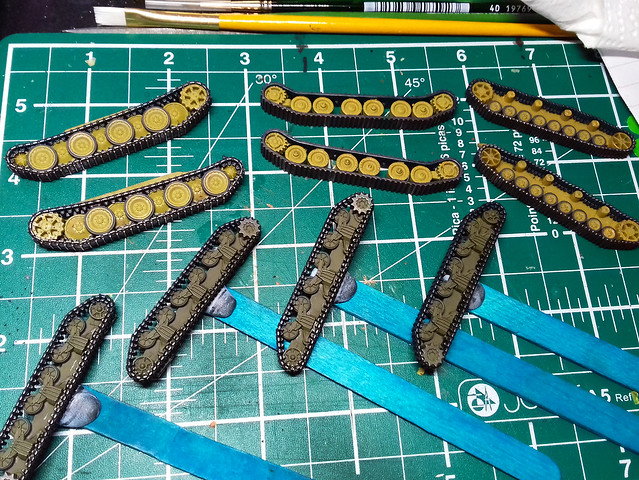 |
| As well as the 'Elefant' tracks - top middle - I am currently working on four other sets; a Panther set, Panzer IV set and two sets of Sherman tracks! |
Then I gave all the tracks a rub with a graphite pencil to give the impression of bare steel. Then it's off for a light coat of gloss varnish in preparation for the application of some German insignia...
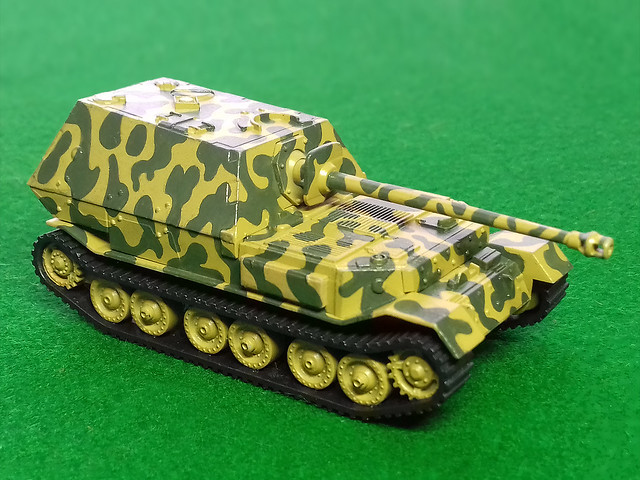 |
| Oooops, I forgot (having learned this before) that doing the graphite pencil work *before* glossing is a bad idea. The shiny 'steel' effect disappears after a coat of gloss varnish! Du-oh! |
Decal Stage & 'Pre-Weathering'
Well, there are actually that many decals to apply, just three German crosses and two sets of vehicle numbers. I don't have 1/100 scale decals to hand so I'm hoping my smallest 1/76 German decals will work (I know the crosses will be a little too large). There was some poetic licence to my application of decals and they are not historically accurate but are intended to be suitable for tabletop gaming purposes.
With the decals quickly applied I moved on to a new process that I have just started applying to my models - 'pre-weathering' prep. The idea is to lay down a thin wash of peaty brown to indicate surface dirt and to take the 'newness' off the pristine painted model prior to more intensive weathering.
I am pleased with this newly added phase in my painting and will start to use it on more of my models. In fact, I had occasionally already been experimenting with a sort of weathering prep using powder pigments, but this was very hit and miss and I was never really satisfied with it. Using a light - diluted - wash is far more effective.
Next: Deep weathering - chipping, etc.
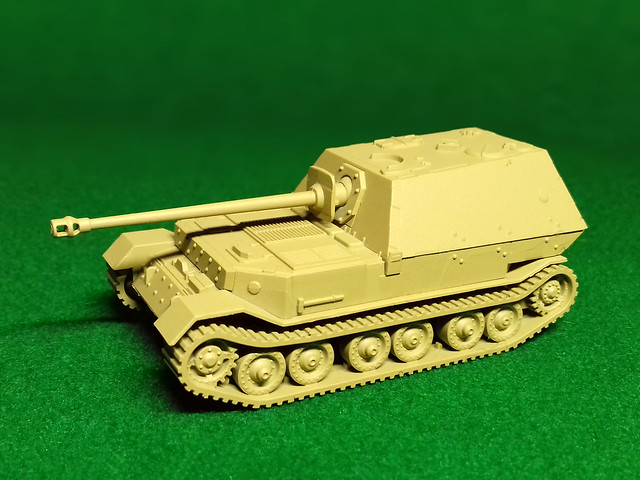
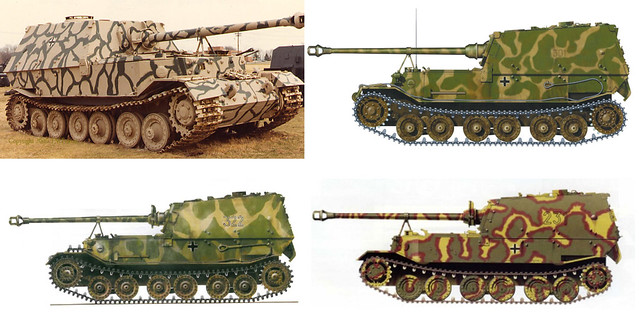
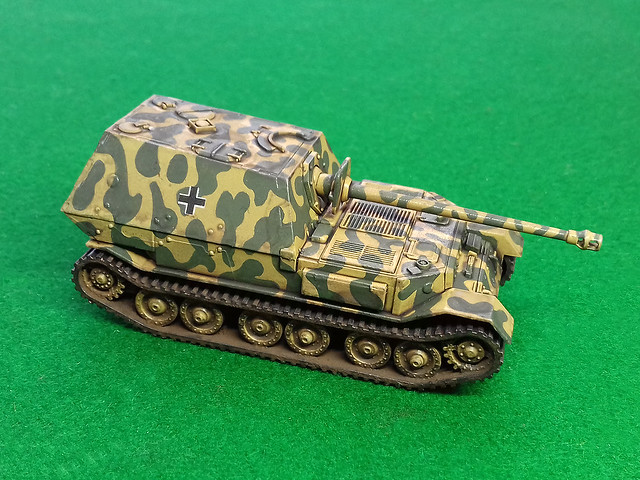
Thanks, the camo choice has helped me, I am just about to cut this model away from the sprue.
ReplyDeleteYou are very welcome. Nice of you to give nice feedback. I like this period (1943 - just before the standard German three colour camo came along) as there are lots of weird and wonderful patterns. I'm just finishing a 1943 Tiger in a 'crazy paving' striped pattern! :)
Delete